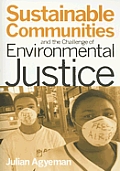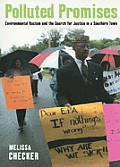November 7th was the day voters in Michigan rejected affirmative action (Proposal 2) and voted for a state constitutional amendment called the Michigan Civil Rights Initative. The question that my professor would surely have posed on the final exam in my seminar is: What effect does a ban on affirmative action programs on the state level have - if any - on the environmental justice movement and the application of environmental policy in Michigan? Where are we now headed? How does the new Michigan civil rights amendment guarantee equity in the application of environmental regulation?
Right now, I can't provide an answer. Here's your chance to help me.
My questions for you:
Need a more complex definition of EJ? According to the University of Michigan Dept. of Natural Resources and Environment: environmental justice is concerned with the inequalities that arise from social, political and environmental decision making, actions and policies. Environmental injustice gives rise to class, gender and racial disparities such as the increased likelihood of being exposed to environmental hazards; negative impacts of environmental processes and policies; poverty; public health; worker rights and occupational safety; the segregation of jobs, housing, communities, facilities, and public conveyances; unequal access to environmental amenities like parks and playgrounds; inadequate maintenance of open space, streets, and facilities; inequality in the delivery of environmental services like garbage removal and transportation; the appropriation of land, destruction of indigenous cultures, and the abrogation of traditional treaty rights; and the expulsion or removal of people from particular territories.
Environmental justice is also concerned with the preservation of land, and the environmental practices and cultures of marginalized peoples; developing sustainable communities; providing multi-cultural environmental education; safeguarding human rights; and shaping new environmental discourses, ethics, policies, and plans for the twenty-first century.
Researchers have documented disproportionate exposure to hazardous conditions in communities of color and low-income communities in the U.S. Canada, and some European countries. Hazardous environmental conditions (arising from North-South relations) have been identified in several developing countries. Understanding the processes that give rise to environmental inequalities is a necessity for achieving the goal of a sustainable society.
At first glance, It seems to me that a lack of affirmative action will encourage environmental inequality. Don't let my opinion sway you, I could be wrong. As always your comments are desired and encouraged.
Educate yourself:
 Earth Democracy: Justice, Sustainability, and Peace
Earth Democracy: Justice, Sustainability, and Peaceby Vandana Shiva
 Sustainable Communities and the Challenge of Environmental Justice
Sustainable Communities and the Challenge of Environmental Justiceby Julian Agyeman
 Polluted Promises: Environmental Racism and the Search for Justice in a Southern Town
Polluted Promises: Environmental Racism and the Search for Justice in a Southern Townby Melissa Checker
No comments:
Post a Comment